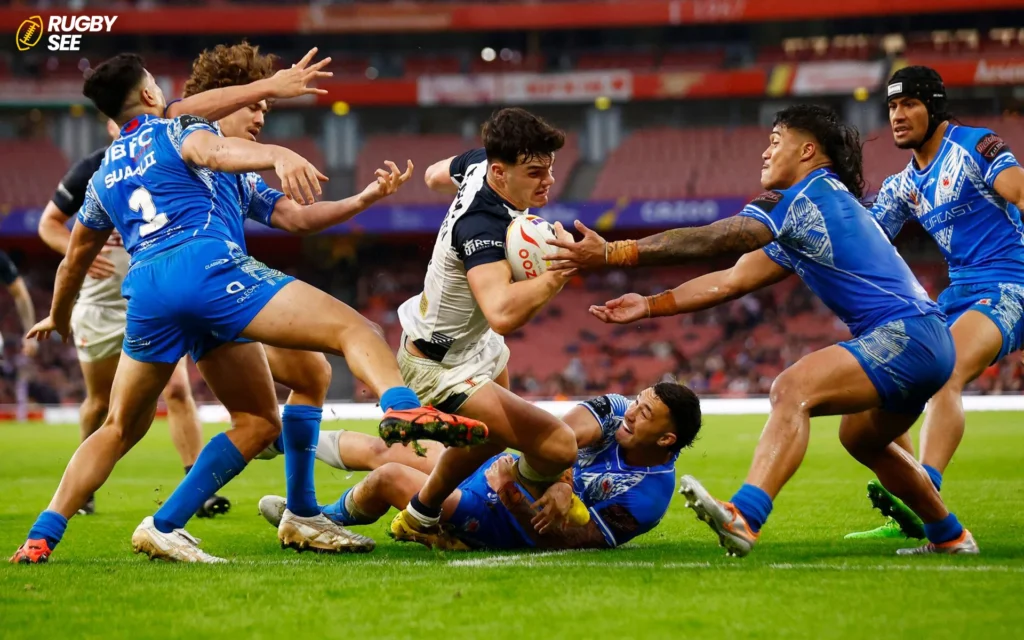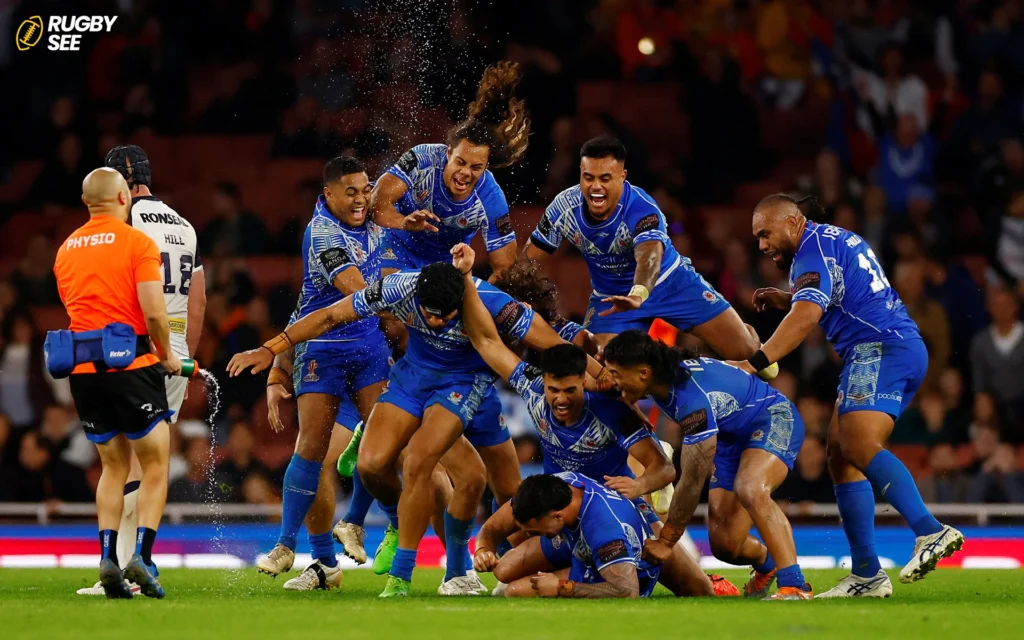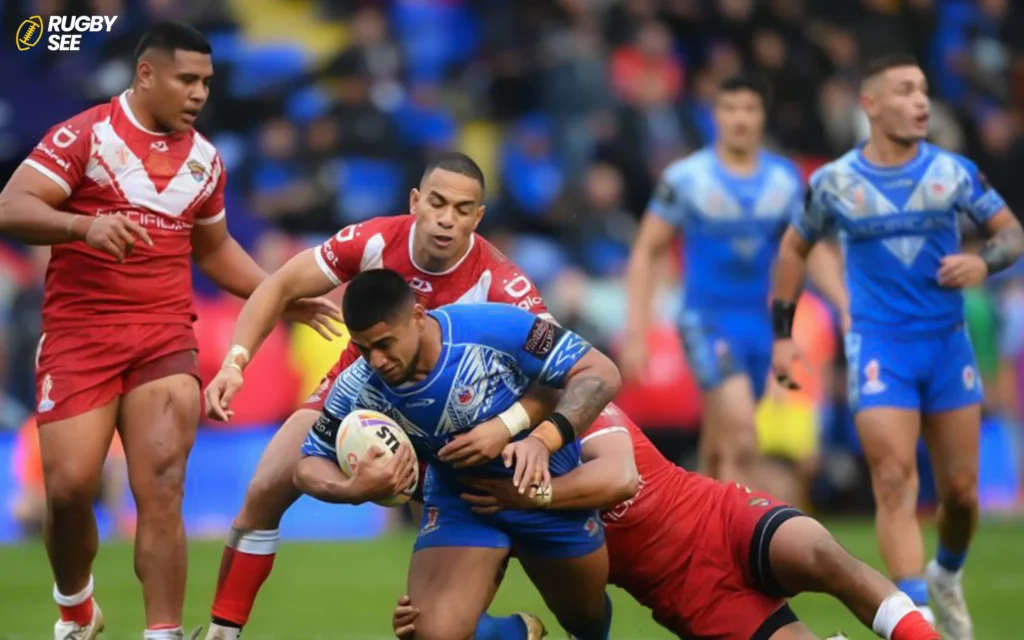The haka, a traditional Maori war dance, is a symbolic pre-match ceremony performed by New Zealand rugby teams, particularly the All Blacks, before international matches. This powerful and emotional performance has captivated audiences around the world, symbolizing strength, unity and heritage. This article from Rugbysee discusses the reasons for the prominent place of the haka in rugby, exploring its cultural significance, historical roots, and reasons for its acceptance and respect in the global rugby community.
Cultural Significance
The haka is much more than a pre-game entertainment; it is a profound expression of cultural identity. Originating from the Māori people of New Zealand, it serves multiple purposes – as a war dance to intimidate the enemy, a celebration of triumph, and a display of a tribe’s pride and unity. In the context of rugby, the haka acts as a powerful symbol of the team’s strength and unity, setting the tone for the match.
Historical Roots in Rugby
The haka’s integration into rugby dates back to the early 20th century when the New Zealand Native team toured the British Isles in 1888 and 1889. Although not the All Blacks’ official team at the time, they set a precedent for the performance of the haka in rugby. The practice was officially adopted by the All Blacks in 1905, and since then, it has become an integral part of New Zealand rugby culture, performed before every international match and if you want to know about Rugby shirts read What are Rugby Shirts Made Of? A Comprehensive Guide.
Respect for Tradition and Identity
One of the key reasons the haka is allowed and embraced in rugby is the sport’s deep respect for cultural traditions and identity. Rugby, particularly at the international level, promotes values of respect, unity, and sportsmanship. The haka is a manifestation of these values, offering a moment where a team can express their heritage and identity with pride.

The Global Rugby Community’s Acceptance
The global rugby community’s acceptance of the haka is indicative of the sport’s inclusive and respectful nature. Opposing teams and their supporters often observe the haka in silence, acknowledging the cultural importance of the ritual. This mutual respect is a testament to rugby’s ethos, where competition on the field is fierce but always underpinned by respect for the opponent.
Impact on the Game
The haka also has a psychological impact on the game, energizing the performing team and setting a highly competitive tone for the match. For many players, performing the haka is a moment of immense pride and a way to connect with their ancestry and history. This emotional charge can provide a psychological edge, showcasing the unique blend of sports and culture that rugby embodies.
Criticism and Controversy
While widely respected, the haka has also faced criticism and controversy, with some viewing it as an unfair advantage or questioning its relevance in modern sports. However, these views are relatively marginal within the broader context of global rugby, where the haka is seen as an essential expression of cultural pride and identity.
The Haka’s Evolving Nature
The haka performed by the All Blacks has evolved over time, with different versions being used for different occasions. This evolution reflects the dynamic nature of Māori culture and the desire to keep the tradition alive and relevant. The use of the haka in rugby is a living tradition, continually adapting while retaining its deep roots in Māori culture.

Educational Aspect
The haka serves an educational role, both within New Zealand and internationally, teaching spectators and players alike about Māori culture and traditions. For many international fans, the haka is their first encounter with Māori culture, providing a compelling introduction to New Zealand’s indigenous heritage. Rugby matches, watched by millions around the globe, offer a unique platform for cultural exchange and understanding, showcasing the richness of Māori traditions to a worldwide audience.
Unity and Team Spirit
Beyond its cultural and historical roots, the haka plays a crucial role in building unity and team spirit among the All Blacks and other New Zealand teams that perform it. The act of performing the haka together, in unison, fosters a sense of brotherhood and collective strength among the players. It is a physical and emotional expression of their readiness to face their opponents, embodying the team’s spirit and determination.
Global Respect and Recognition
The widespread respect and recognition the haka has received globally underline the international rugby community’s appreciation for cultural expressions. The ritual has become synonymous with New Zealand rugby, contributing to the team’s iconic status in the sport. This global recognition extends beyond the rugby field, contributing to New Zealand’s national identity and promoting Māori culture internationally.
Controversies and Challenges
Despite its broad acceptance, the haka has not been without its controversies and challenges. Instances of misunderstanding and disrespect have occurred, highlighting the need for ongoing education and dialogue around cultural practices. However, these instances are also opportunities for learning and growth, promoting deeper intercultural understanding and respect.

Future of the Haka in Rugby
Looking forward, the haka’s role in rugby appears secure, cherished as a vibrant expression of New Zealand’s culture and an integral part of the sport’s tradition. Its continued acceptance speaks to the potential of sports to bridge cultures and celebrate diversity. As rugby evolves, the haka will undoubtedly remain a defining feature of New Zealand’s teams, continuing to inspire players and fans alike with its powerful message of unity, strength, and cultural pride.
The haka is much more than a pre-game ritual; it is a vital expression of New Zealand’s cultural heritage and a respected tradition in the international rugby community. Its acceptance and continued presence in rugby reflect the sport’s values of respect, unity, and inclusivity. The haka enriches the rugby experience, adding depth and meaning to the competition and fostering a spirit of cultural appreciation and understanding that transcends national boundaries. As we look to the future of rugby, the haka stands as a testament to the sport’s ability to celebrate and honor the diverse cultures from which its players and fans come, making it not just a game, but a global gathering that celebrates shared human values and cultural diversity and if you want to know the reason that people watch Rugby read Why do people watch rugby.
Conclusion
The haka’s presence in rugby is a powerful example of how sports can transcend physical competition to celebrate cultural heritage and unity. Its allowance and acceptance in rugby are grounded in the sport’s core values of respect, inclusivity, and sportsmanship. Far from being just a pre-match ritual, the haka is a profound expression of identity, pride, and unity, cherished by players and fans alike. It underscores the unique spirit of rugby, where tradition and modernity converge on the global stage, fostering a deeper understanding and appreciation of diverse cultures.










